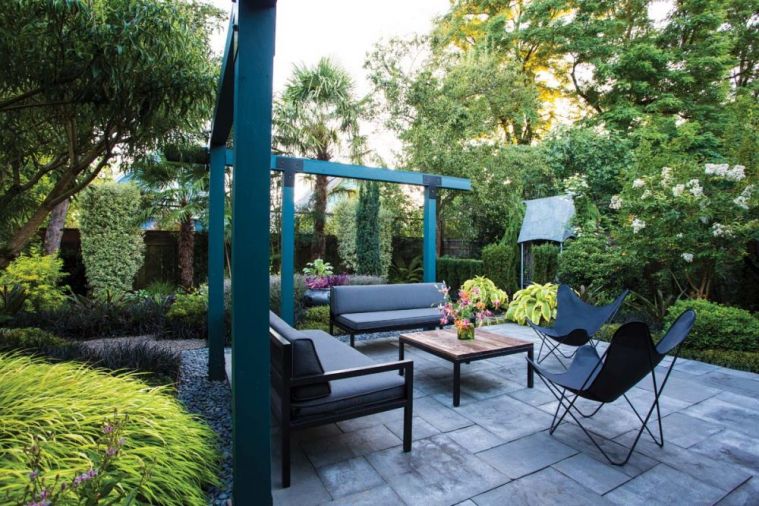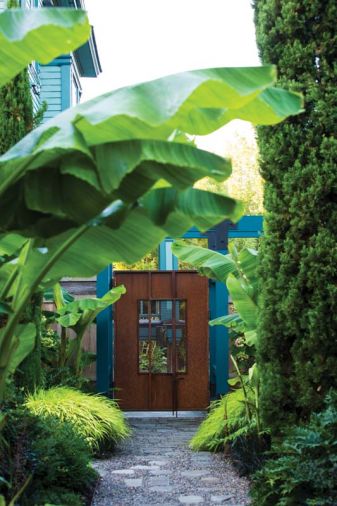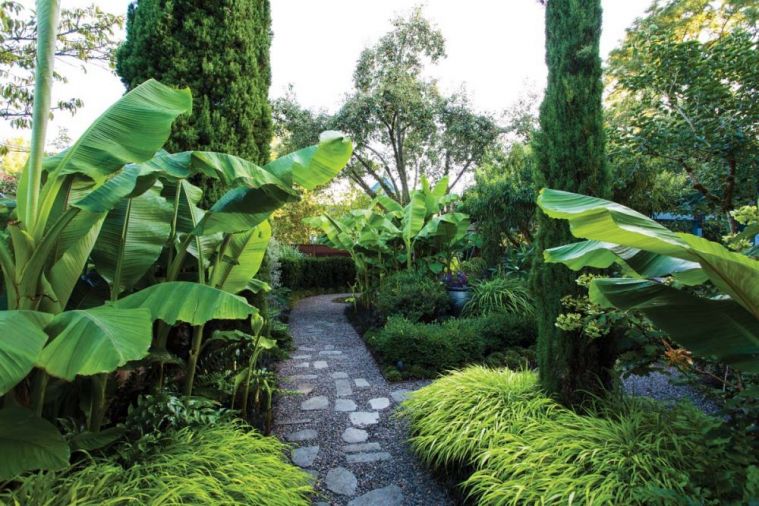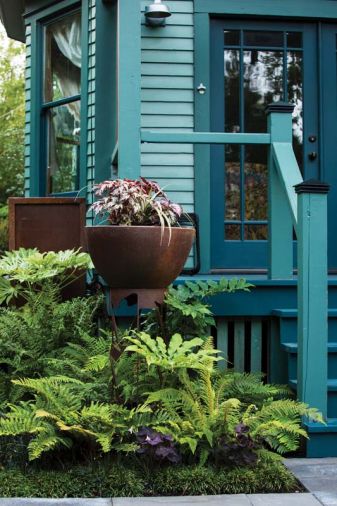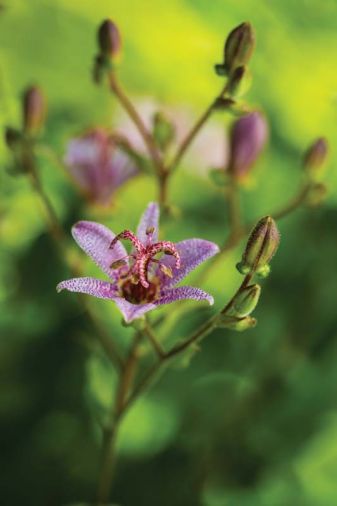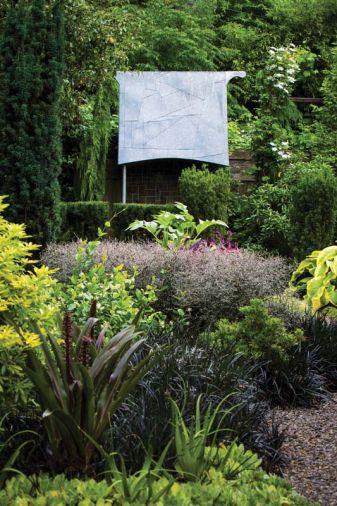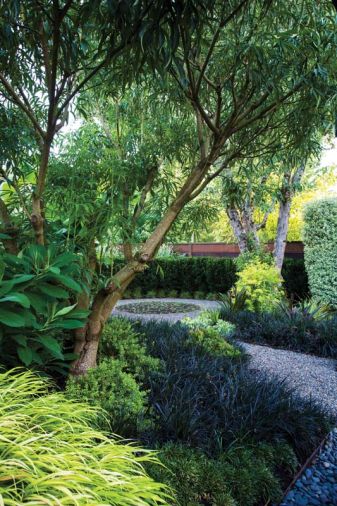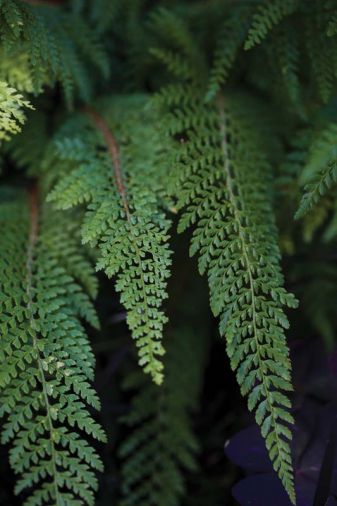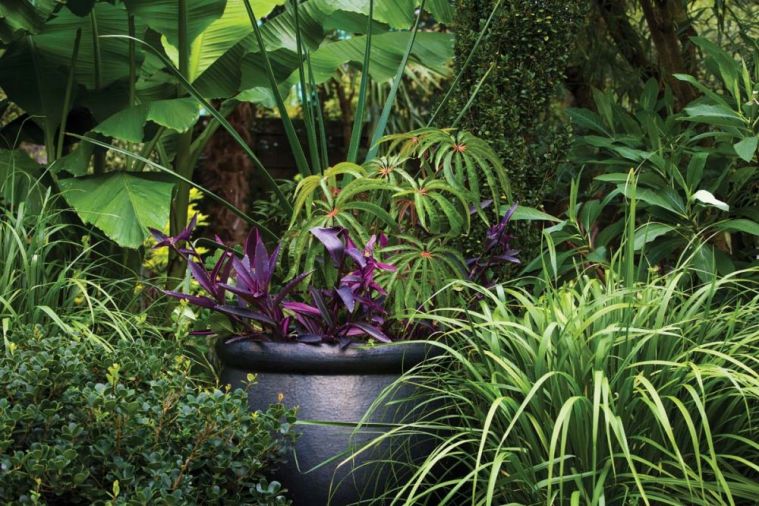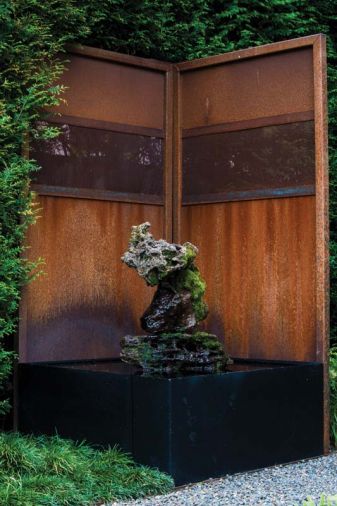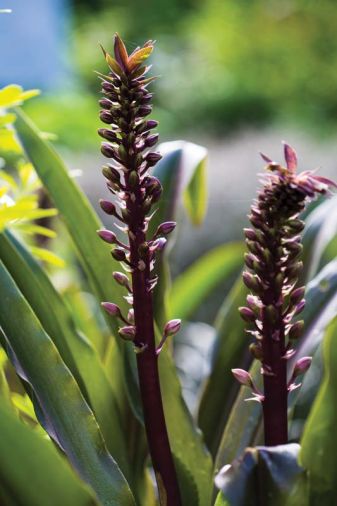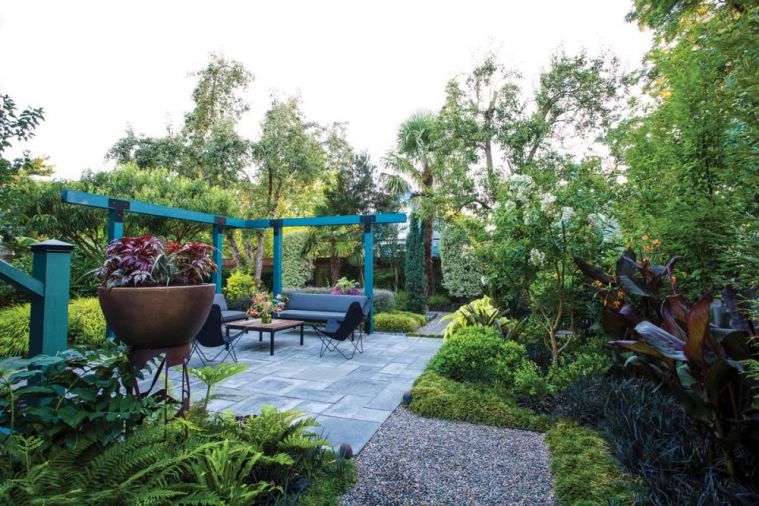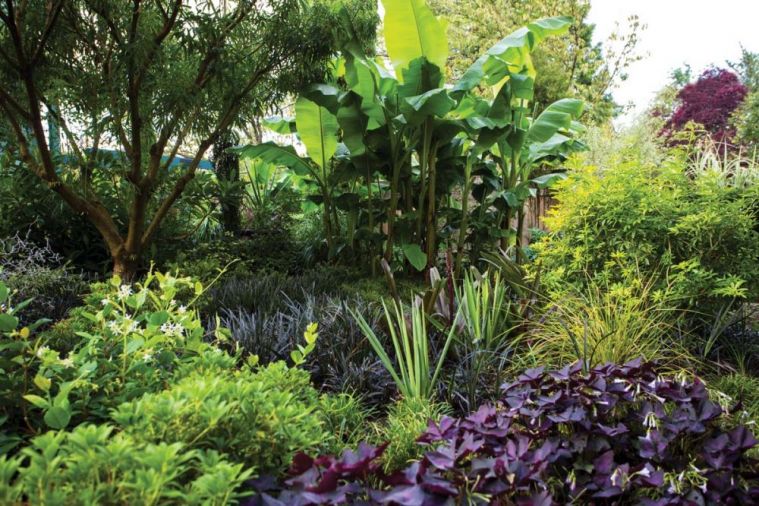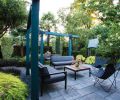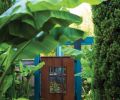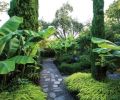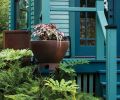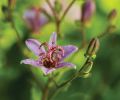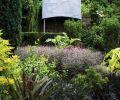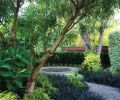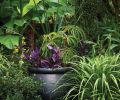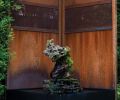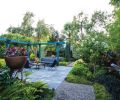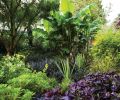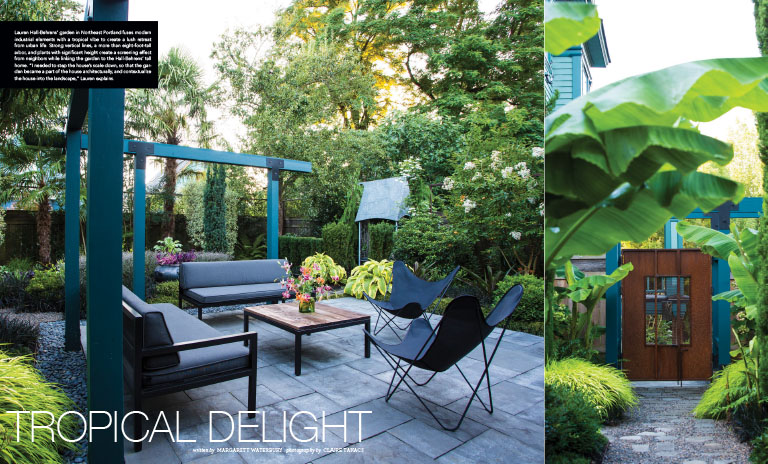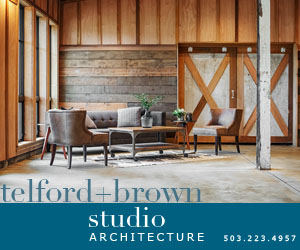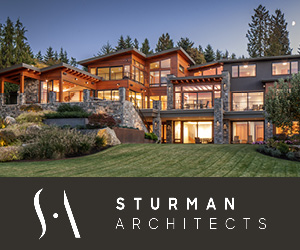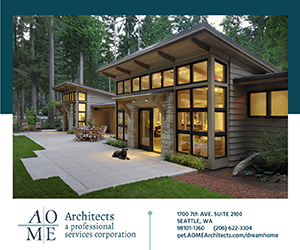When landscape designer Lauren Hall-Behrens moved into her home in Northeast Portland in 2001, the garden was in rough shape. Elevated from the street by several feet, the back garden was weedy, disorganized, and full of unmaintained fruit trees. “It was a crazy scene,” Lauren laughs.
As the owner and principal of Lilyvilla Gardens, a Portland-based landscape design firm, she had the knowledge to transform her garden from a chore to an oasis – but it turns out that designing a garden for yourself is a lot harder than designing for a client.
“As a designer, I get to see other people’s property through a beginner’s eye. I don’t have the attachment to the space that an owner does, so I can be more flexible. But when it’s your own garden, and you have attachment, that’s more difficult,” she says.
For many years, Lauren used her property as more of a laboratory than a garden, adding, removing, and rearranging plants each year. “For a long time, I was just experimenting,” she says. “I kind of exhausted myself, but I learned so much.” Then, in 2010, she decided it was time to create something more permanent, so she ripped everything out for the last time and began to design a peaceful, low-maintenance urban retreat inspired by one of her favorite groups of plants: Asian tropicals.
“I love big-foliage plants, and a lot of those tend to be or look tropical,” says Lauren. “When my grandparents took me to Mexico when I was a kid, I loved being in that tropical environment, and the feeling of being dwarfed by plants.” The plants in her garden might look exotic, but they’re all actually well adapted to our climate. “All of these plants are perfectly hardy, except the ones in the pots. We have so many different types of plants that can grow here. It’s pretty exciting – we can have whatever kind of garden we want.”
While developing the concepts for this garden, Lauren kept simplicity, relaxation, form, and rhythm at the forefront of her mind. She says thinking about the functional role plants play in a garden – lengthening views, stopping views, hiding corners, or creating a sense of mystery – is essential. “I think structurally and functionally first, then form, then color,” she says. “I’m big into form, more so than flowers. I like to use broadleaf evergreens and coniferous evergreens as structural elements that bring architecture into the garden.” Evergreens like Pittosporum and various ferns are used in this garden to keep it looking lush and verdant, even during the winter months.
A relatively limited plant palette also contributes to simplicity and cohesion. By using fewer types of plants, especially blooming plants, gardens are easier to maintain. Repeated plants throughout a garden, particularly bold ones like the Japanese Banana flanking the pathways and entry, also provide a strong sense of rhythm by linking distinct areas within the space. Achieving that rhythm takes discipline, though. Lauren began this project as she begins all of her client-driven projects: by making a long list of potential plants, and then aggressively editing it down to the barest essentials. “Often, I edit to the point where I’m uncomfortable,” says Lauren. “I think, ‘is this too simple?’ And when I ask that question, that’s where I need to stop, because that usually means I found my balance between and simplicity.”
As in many of Lilyvilla’s projects, hardscaping also plays a major role in this garden. Lauren opted to keep the ground level to retain as much privacy as she could. Many of the hardscaping elements, including the fence, gate and edging are made from rusted steel. “I’m attracted to that color, and I think it contrasts nicely with the house and the plants,” she explains.
“I feel the garden and the hardscape have to play with one an-other,” she explains. “If someone else has designed the hardscape, often planting spaces are an afterthought, and they’re much too narrow. To create a real garden feel, a space with texture, elevation, variation and form, then you need to have some room to do it. I generally don’t take on projects unless I’m asked to design hardscapes and plantings.”
When considering the hardscape design for her own garden, Lauren spent a lot of time considering the kind of experiences she wanted to have. At first, it seemed essential to add a dining area on her main patio, but the more she thought about it, the less important that element began to appear. “I realized I didn’t want what I thought I wanted. I just wanted to go out and lounge on something comfortable.” After struggling to find outdoor furniture she loved, she designed the two outdoor sofas herself, and commissioned a furniture maker to build them.
Focusing on creating a comfortable lounge space was exactly the right choice for Lauren. “You often hear people, especially gardeners, say ‘I never sit down in my garden,’ and that makes me sad! There is so much to observe in the natural world.” After adding a water feature, Lauren was surprised how many different bird species began stopping by her garden. “Hearing the different bird songs and watching the birds come through is so beautiful, I just love it.”
That human-centered approach to garden design pervades all of Lauren’s projects. “I’m always interested in why people want a garden,” she says. “A lot of people want a space to entertain and be outside. I love that, and I also want to go beyond that. I love to work on projects where we can get into more conceptual thinking, because at that point gardens become environments and environment can be emotionally resonant. I think having natural beauty around makes people happy. Gardens and plants are just good for people.”

